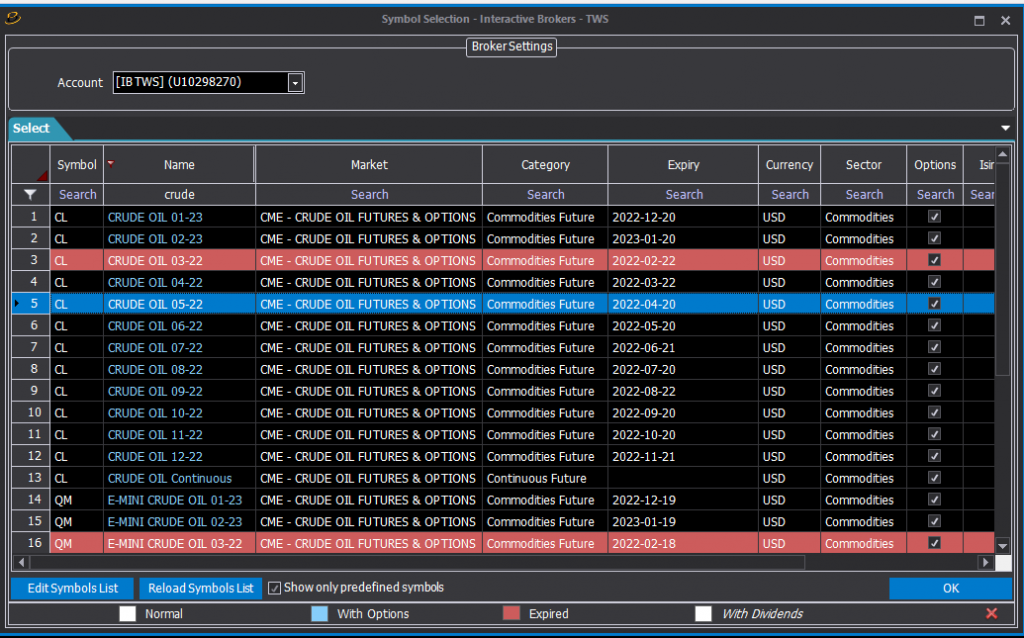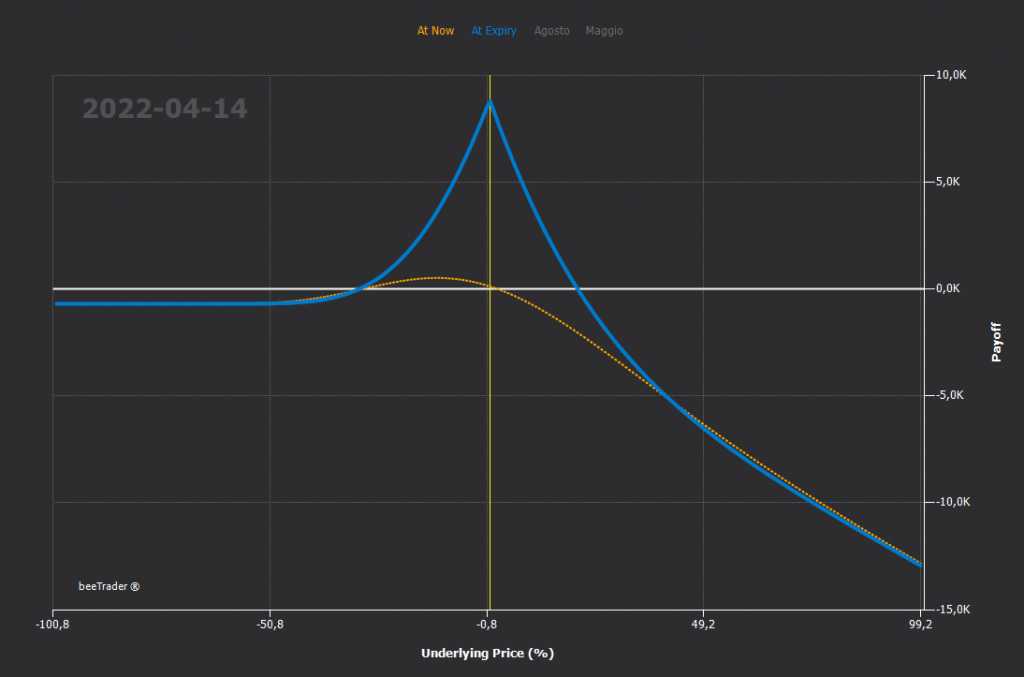Futures Options
Video Tutorial
In cases where you want to build a Calendar strategy, it is always necessary to check whether the options that will be used in the strategy have a future as underlying. This can happen for Commodities, Currencies, Bonds, Interest Rates and some Indices.
For example, in Commodities, the underlying identifies the raw material on which the futures are quoted which, depending on the expiry date, have different prices. For this reason, these futures must be considered as underlying.
The options are listed by a specific future.
Let’s hipothize that three different Future are listed as follow:
- January with Last = 1000,
- February with = 1100,
- March with Last = 1200.
Suppose we want to build a January / March Calendar and use the ATM options.
It is immediately evident that the two options that will be used will have different strikes since the January options are ATM to Strike 1000, while the March options are ATM to Strike 1200.
Or, if I made a January / March Calendar with options at Strike 1000, the January option will be ATM while the March option will be 20% OTM / ITM yet.
Both the strategy values , as the relative PayOff, if built in the standard way, will be misleading, untrue. Often the results have no risk and therefore can attract the trader to execute more strategies, convinced that he is facing an arbitrage.
I emphasize that we are talking about Options on Futures and NOT options on Indices which also have futures. In this second case, in fact, the futures have different prices but the options are listed on the Index. Every future on its expiry date will always coincide with the Last of the Index minus dividends, if any!
To proceed to create a calendar with Options on Future you must imitate the following steps.
Example on Crude Oil
Let’s suppose we want to create a Calendar with an April / July expires.
I create a new strategy, and, as underlying, I select the May future (remember that the futures have the name of the month following its real expiry).
In the options chain, choose the April expiry, and the strike that will make up the Calendar.
Suppose we sell Call 110, at this moment ATM on April future.
I create a new strategy with a new underlying which will be the August future (remember that it expires in July).
On this strategy I choose the expiry for the future that I have chosen as the underlying, that is before August and after June, so July.
On this expiry we buy the Call ATM which, in this case, has a strike of 100, since the underlying is 100 (in this case, as you can see, the futures are in backwardation).
Now open “Potfolio” and load the strategies saved with the name of the future. By opening the strategy tree (by clicking on the + symbol to the left of the name) we can see all the values concerning both strategies.
We get the Calendar Payoff, a yellow vertical line that identifies the current prices of the underlyings of the two strategies (they are coincident by construction as the X axis is expressed as a percentage of the price) , on the left the indication of the date on which it is calculated and, at the top on the legend, the selection of At Now, At Expiry and separated Options PayOff.
Pay attention please, if you don’t proceed in this way, the payoff that would result using the conventional method would be the following, absolutely not corresponding to the reality of the strategy, which in fact, when the price of the underlying increases, the real one lose money, while in this one realized with the incorrect method would result in a profit.










